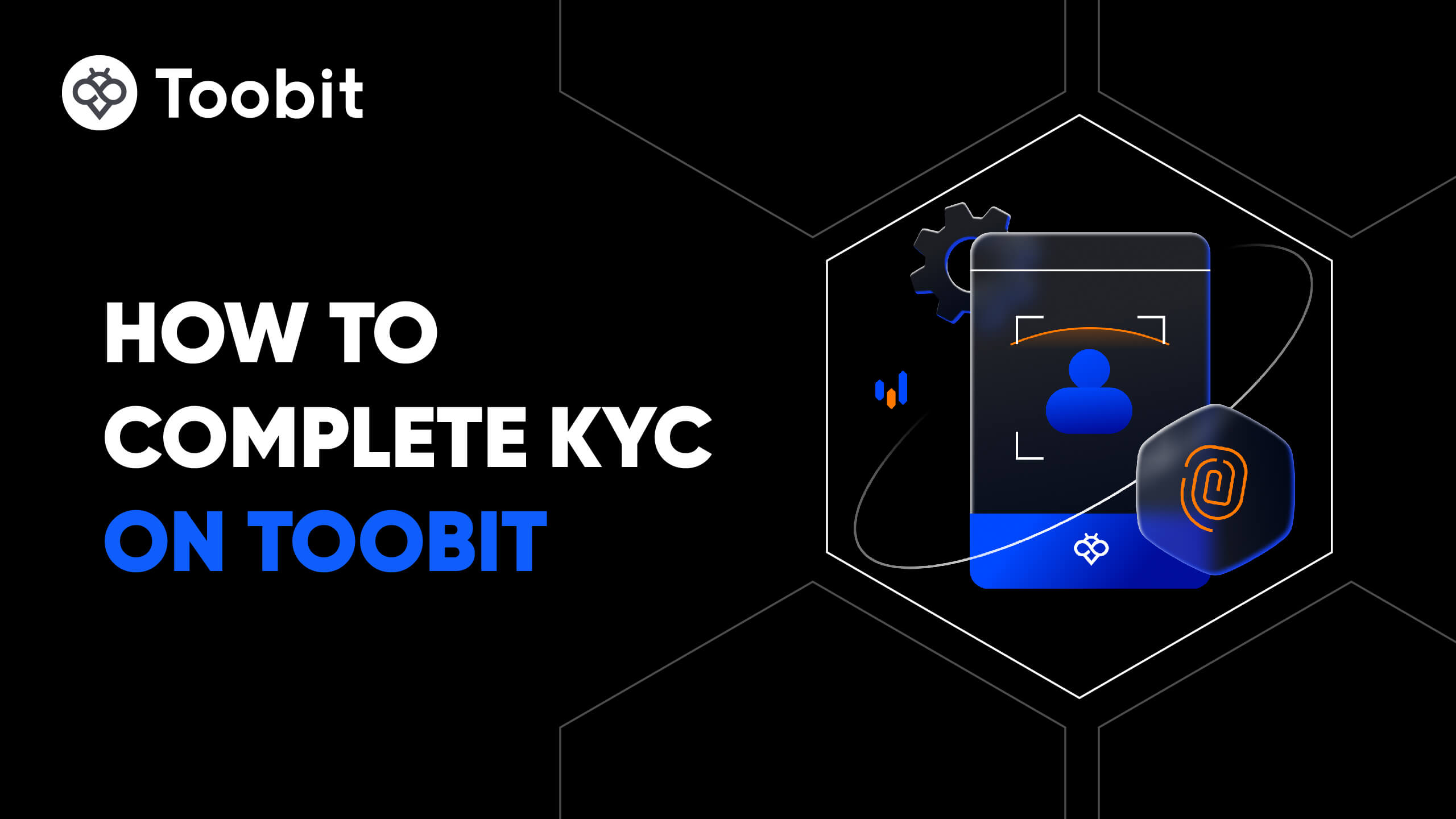Cena Bitcoin
BTCInformacje o rynku Bitcoin
Aktualna cena Bitcoin w USD
Ile warte jest 1 BTC w ?
O Bitcoin(BTC)
Historia ceny Bitcoin
Dlaczego cena Bitcoin ciągle się zmienia?
Jakie czynniki wpływają na wydajność cen Bitcoin?
Globalne ceny Bitcoin
Jak kupić Bitcoin
Dołącz do Toobit już teraz!
Zarejestruj się na Toobit przy użyciu swojego adresu e-mail/numeru telefonu komórkowego i kraju zamieszkania, oraz ustaw silne hasło w celu zabezpieczenia konta.
Zweryfikuj swoją tożsamość
Ukończ weryfikację tożsamości, podając swoje dane osobowe i przesyłając ważny dokument tożsamości ze zdjęciem.
Dodaj metodę płatności i kup Bitcoin (BTC)
Dodaj kartę kredytową/debetową lub konto bankowe po weryfikacji konta Toobit. Wybierz spośród wielu dostępnych metod płatności, aby kupić Bitcoin na Toobit.
Handluj perpetual Futures BTC
Po pomyślnym zarejestrowaniu się na Toobit i zakupie USDT lub tokenów BTC, możesz rozpocząć handel Derytatywami, w tym Futures BTC oraz handlem z użyciem Margin, aby zwiększyć swoje dochody.
Dołącz do BTC Kopiuj z zawodowymi traderami
Po rejestracji na Toobit i pomyślnym zakupie USDT lub tokenów BTC, możesz również rozpocząć copy trading, śledząc profesjonalnych traderów.
Gdzie mogę kupić Bitcoin?
Kup kryptowaluty w aplikacji Toobit
Zarejestruj się w kilka minut, aby kupić kryptowaluty za pomocą karty kredytowej lub przelewu bankowego.
Handluj na Toobit
Wpłać swoje kryptowaluty na Toobit i korzystaj z wysokiej płynności oraz niskich opłat transakcyjnych.
Sekcja wideo — szybka weryfikacja, szybki handel

Jak zakończyć identyfikację na Toobit i chronić się przed oszustwami
- 1.Zaloguj się na swoje konto Toobit.
- 2.Jeśli jesteś nowy w Toobit, obejrzyj nasz samouczek jak założyć konto.
- 3.Krok : Kliknij ikonę profilu w prawym górnym rogu paska nawigacyjnego, a następnie przejdź na stronę Identyfikacja.
FAQ dotyczące Bitcoina (BTC)
Kto stworzył Bitcoina?
Bitcoin został stworzony przez Satoshi Nakamoto, pseudonimowego twórcę, który opublikował whitepaper Bitcoina w 2008 roku. Chociaż prawdziwa tożsamość Nakamoto pozostaje nieznana, uruchomili oni pierwszy blok Bitcoina w 2009 roku, co oznacza narodziny technologii blockchain. Od tego czasu deweloperzy tacy jak Gavin Andresen i ponad 750 współtwórców na GitHubie kontynuują rozwijanie i utrzymanie sieci Bitcoin.Jak działa wydobycie Bitcoina i czym jest 'halving'?
Wydobycie Bitcoina to proces walidacji transakcji i zabezpieczania sieci poprzez Proof-of-Work. Górnicy rywalizują w rozwiązywaniu skomplikowanych zagadek matematycznych, a pierwszy, który odniesie sukces, tworzy nowy blok w blockchainie. W zamian otrzymują nagrodę blokową w nowo wyemitowanych Bitcoinach. Halving to zaprogramowane wydarzenie, które zmniejsza tę nagrodę o połowę co około cztery lata. Ten deflacyjny mechanizm jest wbudowany w kod Bitcoina, aby kontrolować podaż i zapewnić, że całkowita liczba Bitcoinów nigdy nie przekroczy 21 milionów.Kiedy jest halving Bitcoina?
Ostatni halving Bitcoina miał miejsce 20 kwietnia 2024 roku. Halving Bitcoina występuje mniej więcej co cztery lata, lub co 210 000 wydobytych bloków, jako część oryginalnego projektu Satoshi Nakamoto do kontrolowania podaży. Każde wydarzenie halvingu zmniejsza nagrodę blokową o połowę, spowalniając tworzenie nowych Bitcoinów i wydłużając cykl nagród dla górników. Ten wbudowany mechanizm ogranicza całkowitą podaż do 21 milionów monet, pomagając utrzymać rzadkość i ograniczyć inflację.Kiedy jest następny halving Bitcoina?
Halving Bitcoina to wydarzenie, które ma miejsce mniej więcej co cztery lata, lub po wydobyciu 210 000 bloków, zmniejszając tempo tworzenia nowych Bitcoinów. Najnowszy halving miał miejsce w kwietniu 2024 roku, zmniejszając nagrodę blokową do 3,125 BTC na blok. Następny halving Bitcoina jest spodziewany w 2028 roku.Ile jest Bitcoinów?
Bitcoin ma stałą maksymalną podaż 21 milionów monet, ustaloną przez jego oryginalny kod, aby zapewnić rzadkość i chronić przed inflacją. Nowe Bitcoiny wchodzą do obiegu poprzez wydobycie, proces, w którym potężne komputery weryfikują transakcje i dodają nowe bloki do blockchaina.Nagroda za wydobycie jest zmniejszana o połowę mniej więcej co cztery lata, spowalniając tempo tworzenia nowych monet. Obecnie wydobyto ponad 19,7 miliona Bitcoinów, pozostawiając mniej niż 2 miliony do wyprodukowania. Ta ograniczona podaż jest jednym z głównych powodów, dla których Bitcoin jest często nazywany cyfrowym złotem.Czy Bitcoin to dobra inwestycja?
Bitcoin jest często uważany za inwestycję wysokiego ryzyka i wysokiej nagrody ze względu na zmienność cen BTC i ewoluującą dynamikę rynku. Chociaż przyniósł silne długoterminowe zwroty, pozostaje podatny na gwałtowne wahania cen, niepewność regulacyjną i potencjalne zagrożenia bezpieczeństwa.Wielu inwestorów postrzega Bitcoina jako zabezpieczenie przed inflacją i narzędzie do dywersyfikacji portfela, zwłaszcza wraz z rosnącą popularnością ETF-ów kryptowalutowych i rosnącym udziałem instytucjonalnym. Jednak może nie być odpowiedni dla każdego. Czy Bitcoin jest dobrą inwestycją, ostatecznie zależy od twojej tolerancji na ryzyko, celów finansowych i horyzontu inwestycyjnego.Zawsze przeprowadzaj własne badania i rozważ skonsultowanie się z licencjonowanym doradcą finansowym przed zainwestowaniem w kryptowaluty.Ile Satoshi składa się na 1 BTC?
Jeden Bitcoin (BTC) jest równy 100 000 000 Satoshi. Satoshi, nazwane na cześć tajemniczego twórcy Bitcoina Satoshi Nakamoto, pozwala na dokonywanie transakcji w niezwykle małych ułamkach.Ten wysoki poziom podzielności sprawia, że Bitcoin jest praktyczny dla mikropłatności, handlu i oszczędności, nawet gdy jego wartość nadal rośnie z czasem.Kim jest Satoshi Nakamoto?
Satoshi Nakamoto to pseudonimowa osoba lub grupa odpowiedzialna za stworzenie Bitcoina. Napisali oryginalny whitepaper Bitcoina i opracowali pierwszą wersję oprogramowania Bitcoin. Pomimo założenia całego przemysłu kryptowalutowego, prawdziwa tożsamość Satoshi pozostaje jedną z największych tajemnic współczesnej technologii i finansów.Jaka jest spuścizna Satoshi Nakamoto?
Niezależnie od ich tożsamości, spuścizna Satoshi Nakamoto jest niezaprzeczalna. Rozwiązali długotrwały "problem podwójnego wydawania" w walucie cyfrowej bez polegania na centralnym organie, tworząc pierwszą udaną zdecentralizowaną kryptowalutę i wywołując rewolucję blockchain i Web3. Około 1,1 miliona Bitcoinów wydobytych przez Satoshi, które nigdy nie zostały wydane, stoi jako cichy pomnik ich stworzenia, symbolizując zarówno ogromne bogactwo, jak i trwałe zaangażowanie w system bez zaufania.Czym jest whitepaper Bitcoina i dlaczego jest ważny?
Whitepaper Bitcoina, zatytułowany "Bitcoin: A Peer-to-Peer Electronic Cash System", to dokument założycielski napisany przez pseudonimowego Satoshi Nakamoto. Opublikowany 31 października 2008 roku, przedstawił plan dla pierwszej na świecie udanej zdecentralizowanej kryptowaluty. Dokument jest znaczący, ponieważ wprowadził przełomowe rozwiązanie dla długotrwałego "problemu podwójnego wydawania" w walucie cyfrowej, eliminując potrzebę zaufanego centralnego organu i kładąc podwaliny pod cały przemysł kryptowalutowy i blockchain.Czym jest Bitcoin Rainbow Chart?
Bitcoin Rainbow Chart to długoterminowe narzędzie wizualne, które używa skali logarytmicznej do ilustrowania historycznych trendów cenowych Bitcoina. Każdy kolorowy pas reprezentuje inną strefę wyceny, od niebieskiego (niedowartościowany) do czerwonego (przewartościowany), pomagając użytkownikom szybko ocenić sentyment rynkowy w czasie.Chociaż nie jest przeznaczony do precyzyjnych prognoz cen BTC, Rainbow Chart zapewnia prosty sposób na identyfikację potencjalnych stref kupna i sprzedaży na podstawie przeszłych wyników Bitcoina.Czym jest BTC/USDT?
BTC/USDT to popularna para handlowa, która odzwierciedla kurs wymiany między Bitcoinem (BTC) a Tetherem (USDT), stablecoinem powiązanym z dolarem amerykańskim. Pozwala traderom kupować lub sprzedawać Bitcoina za pomocą USDT, oferując stabilny i wygodny sposób na dostęp do rynku kryptowalut bez konwersji na walutę fiat.BTC/USDT jest jedną z najaktywniej handlowanych par na giełdach takich jak Toobit, cenioną za wysoką płynność i względną stabilność cen BTC.Jak Bitcoin różni się od tradycyjnej waluty fiat?
Tradycyjne waluty fiat są emitowane i regulowane przez centralne władze, takie jak banki centralne. Ich podaż i wartość mogą być wpływane przez politykę rządową i szersze warunki ekonomiczne.Bitcoin, w przeciwieństwie do tego, działa bez centralnego pośrednika. Polega na dowodzie kryptograficznym i konsensusie sieciowym do weryfikacji transakcji i zarządzania emisją, zapewniając przejrzystość, rzadkość i niezmienność.Jakie są główne różnice między Bitcoinem a tradycyjnymi finansami (TradFi)?
Whitepaper Bitcoina przedstawił go jako zdecentralizowaną alternatywę dla tradycyjnych finansów. Kluczowe różnice obejmują: 1. Decentralizacja vs. centralizacja: Bitcoin działa na sieci peer-to-peer bez banków centralnych lub pośredników. 2. Dostęp bez zezwoleń: Każdy może używać lub budować na Bitcoinie bez potrzeby uzyskiwania zgody. 3. Przejrzystość: Wszystkie transakcje są publicznie rejestrowane na blockchainie. 4. Stała podaż: Całkowita podaż Bitcoina jest ograniczona do 21 milionów, w przeciwieństwie do walut fiat, które mogą być drukowane w nieskończoność.Czym jest blockchain i dlaczego jest niezbędny dla wiarygodności Bitcoina?
Blockchain to niezmienny, oznaczony czasem rejestr transakcji, który stanowi podstawę modelu zaufania Bitcoina.Struktura: Transakcje są grupowane w bloki, a każdy nowy blok jest kryptograficznie połączony z poprzednim, tworząc bezpieczny łańcuch danych.Niezmienność: Po dodaniu bloku jego zapisy są prawie niemożliwe do zmiany. To zapewnia przejrzystość, zapobiega podwójnemu wydawaniu i eliminuje potrzebę centralnego organu.Jaka jest rola wydobycia w systemie Bitcoina i jak zapewnia ono bezpieczeństwo?
Wydobycie to konkurencyjny proces, w którym węzły weryfikują transakcje i tworzą nowe bloki. Służy dwóm głównym celom: Zabezpieczanie sieci: Górnicy weryfikują oczekujące transakcje, grupują je w bloki i rozwiązują intensywną obliczeniowo zagadkę znaną jako Proof-of-Work. Ten proces zapewnia, że blockchain pozostaje odporny na manipulacje i godny zaufania. Emisja nowych Bitcoinów: Pierwszy górnik, który rozwiąże zagadkę, dodaje blok do łańcucha i zarabia nowo utworzone Bitcoiny (nagroda blokowa) wraz z opłatami transakcyjnymi. Ten ekonomiczny bodziec motywuje górników do utrzymania bezpieczeństwa sieci.Jak podpisy cyfrowe zabezpieczają transakcję Bitcoin i potwierdzają własność?
Podpisy cyfrowe są fundamentalnym mechanizmem bezpieczeństwa w Bitcoinie, zapewniającym, że tylko prawowity właściciel środków może je wydać.Mechanizm: Podczas wysyłania Bitcoina użytkownik generuje unikalny podpis cyfrowy dla transakcji za pomocą swojego klucza prywatnego.Dowód: Ten podpis kryptograficznie weryfikuje własność bez ujawniania klucza prywatnego, eliminując potrzebę tradycyjnej weryfikacji tożsamości i zapewniając, że transakcje są bezpieczne i niepodważalne.Co oznacza decentralizacja Bitcoina dla zarządzania i kontroli?
Decentralizacja oznacza, że żadna pojedyncza jednostka, taka jak bank, rząd czy korporacja, nie kontroluje sieci Bitcoina. Zarządzanie: Wszelkie zmiany w zasadach Bitcoina wymagają konsensusu większości uczestników sieci, w tym górników, węzłów i deweloperów. Kontrola: Rozproszony rejestr, zabezpieczony przez Proof-of-Work, zapewnia, że nikt nie może arbitralnie zwiększyć podaży pieniądza, cofnąć transakcji ani zamknąć sieci. To podtrzymuje wartość Bitcoina jako odpornej na cenzurę formy pieniądza.Jak whitepaper Bitcoina odnosi się do koncepcji anonimowości? Czy Bitcoin jest naprawdę anonimowy?
Whitepaper Bitcoina wyjaśnia anonimowość poprzez użycie kluczy publicznych (adresów Bitcoin), ale zauważa, że ta anonimowość ma swoje ograniczenia. Pseudonimowość: Transakcje są publiczne, ale wyświetlają tylko adresy Bitcoin, a nie rzeczywiste tożsamości. Użytkownicy są więc pseudonimowi, a nie w pełni anonimowi. Ograniczenie: Jeśli adres zostanie kiedykolwiek powiązany z osobą, wszystkie przeszłe i przyszłe transakcje z tego adresu mogą być śledzone. Bitcoin jest z założenia przejrzysty i nie jest całkowicie anonimowy.Czy Bitcoin to dobry środek przechowywania wartości i dlaczego nazywany jest 'cyfrowym złotem'?
Chociaż whitepaper Bitcoina przedstawia go jako elektroniczny system gotówkowy, jego właściwości — takie jak trwałość, przenośność, podzielność, jednolitość, ograniczona podaż i szeroka akceptowalność, sprawiły, że wielu uważa go za cyfrowe złoto.Jego stała, deflacyjna podaż czyni go odpornym na inflację, co jest kluczową cechą środka przechowywania wartości. Ta perspektywa stała się centralną tezą inwestycyjną, pozycjonując Bitcoina jako potencjalne zabezpieczenie przed tradycyjnymi systemami finansowymi i kluczowy składnik nowoczesnych portfeli.Jak utrzymywane jest długoterminowe bezpieczeństwo sieci Bitcoin?
Długoterminowe bezpieczeństwo Bitcoina jest utrzymywane poprzez kilka kluczowych mechanizmów. 1. Proof-of-Work: To sprawia, że ataki na sieć są obliczeniowo niewykonalne. 2. Bodźce ekonomiczne: Górnicy są nagradzani za uczciwe uczestnictwo, co promuje integralność sieci. 3. Sieć rozproszona: Jej zdecentralizowana struktura eliminuje jakikolwiek pojedynczy punkt awarii. 4. Kryptografia: Silne algorytmy kryptograficzne zabezpieczają wszystkie transakcje, a sieć pozostaje bezpieczna, o ile uczciwe węzły zbiorowo kontrolują więcej mocy obliczeniowej niż potencjalni atakujący.Czy Bitcoin może skalować się, aby stać się globalnym systemem płatności dla codziennych transakcji?
Oryginalny whitepaper przyznaje, że skalowanie może być wyzwaniem. Sugeruje, że większość transakcji mogłaby odbywać się poza łańcuchem poprzez oddzielne kanały płatności, z głównym blockchainem używanym do rozliczania tych kanałów. Ta koncepcja położyła podwaliny pod rozwiązania warstwy 2, takie jak Lightning Network, które umożliwiają szybkie, niskokosztowe mikropłatności i pomagają rozwiązać problem skalowalności dla wykorzystania Bitcoina jako cyfrowej gotówki.W jakiej strefie czasowej aktualizowana jest podana cena BTC?
Cena BTC pokazana na stronie jest aktualizowana w czasie rzeczywistym przy użyciu UTC (Uniwersalny Czas Koordynowany). Zapewnia to spójność dla użytkowników na całym świecie. Jeśli znajdujesz się w innej strefie czasowej, twój lokalny czas może się różnić — sprawdź znacznik czasu przed odniesieniem się do najnowszej ceny Bitcoina.Dlaczego cena Bitcoina może się nieznacznie różnić między giełdami?
Ponieważ każda giełda ma własną księgę zleceń, płynność i wolumen obrotu, cena Bitcoina może się nieznacznie różnić między platformami. Ta różnica wynika z dynamiki podaży i popytu na każdej indywidualnej giełdzie, a także opłat lub opóźnień, które mogą dotyczyć niektórych par handlowych.Czy wyświetlana cena BTC może być używana do przeliczania innych walut (np. EUR, JPY)?
Cena pokazana jest denominowana w USD. Jeśli potrzebujesz uzyskać równoważną cenę Bitcoina w innej walucie fiat (np. EUR, JPY), musisz zastosować aktualny kurs wymiany USD na twoją walutę — lub użyć narzędzia do konwersji walut dla dokładnej konwersji.Jak często aktualizowana jest na żywo cena Bitcoina na Toobit?
Kanał cenowy Bitcoina na żywo jest odświeżany ciągle (w miarę jak odbywają się transakcje), aby odzwierciedlać najnowszą aktywność rynkową. Zapewnia to, że użytkownicy widzą zmiany cen w czasie zbliżonym do rzeczywistego, a nie opóźnione lub nieaktualne notowania.Czy pokazana cena BTC uwzględnia opłaty transakcyjne lub poślizg cenowy?
Nie, wyświetlana cena BTC reprezentuje kurs rynkowy za 1 Bitcoina (BTC). Nie obejmuje żadnych opłat transakcyjnych, opłat sieciowych ani potencjalnego poślizgu cenowego. Rzeczywiste koszty mogą się różnić w zależności od rodzaju zlecenia, metody płatności lub panujących warunków sieciowych.Jaka jest różnica między "Ostatnią ceną" a "Kapitalizacją rynkową" na stronie z ceną Bitcoina?
"Ostatnia cena" odnosi się do najnowszej ceny transakcji dla Bitcoina (tj. tego, co ktoś ostatnio zapłacił). "Kapitalizacja rynkowa" to całkowita wartość wszystkich krążących Bitcoinów (bieżąca podaż × ostatnia cena), dając przegląd całkowitej wyceny rynkowej Bitcoina.Dlaczego cena BTC zmienia się co sekundę?
Cena BTC zmienia się nieustannie, ponieważ Bitcoin jest handlowany 24/7 na globalnych giełdach. Każde zlecenie kupna i sprzedaży wpływa na podaż i popyt, co bezpośrednio przesuwa cenę Bitcoina w górę lub w dół w czasie rzeczywistym. W przeciwieństwie do akcji, nie ma dzwonka zamykającego. Ponieważ Bitcoin ma stałą całkowitą podaż 21 000 000 BTC, zmienność cen jest napędzana wyłącznie przez zachowanie rynku, płynność, wiadomości i czynniki makroekonomiczne.Jakie czynniki mają największy długoterminowy wpływ na cenę Bitcoina?
Długoterminowe trendy cenowe Bitcoina są głównie napędzane przez:Cykl halvingu BitcoinaAdopcję instytucjonalnąWarunki makroekonomiczne (inflacja, stopy procentowe)Rozwój regulacyjnyBezpieczeństwo sieci i wskaźnik hashPonieważ Bitcoin ma twardo ograniczoną całkowitą podaż tylko 21 000 000 BTC, rzadkość odgrywa główną rolę w podnoszeniu ceny BTC na długie horyzonty czasowe.Jak obliczana jest cena BTC na różnych giełdach?
Cena BTC, którą widzisz na większości platform, to zagregowana średnia cen z wielu giełd, ważona wolumenem obrotu. Jednak ze względu na różnice w płynności i popycie regionalnym, cena Bitcoina może się nieznacznie różnić między platformami. Niezależnie od giełdy, krążący aktyw jest tym samym Bitcoinem z maksymalną podażą 21 000 000 BTC.Dlaczego cena Bitcoina reaguje tak silnie na wydarzenia informacyjne?
Bitcoin jest bardzo wrażliwy na:Zatwierdzenia ETFRegulacje rządoweDecyzje dotyczące stóp procentowychAtaki lub upadki giełdOgłoszenia inwestycji instytucjonalnychPonieważ cena BTC odzwierciedla natychmiastowy sentyment rynkowy, nawet jeden ważny nagłówek może wywołać duże wahania cen. Ograniczona podaż 21 000 000 BTC wzmacnia te reakcje, ponieważ nowe monety nie mogą być tworzone w odpowiedzi na popyt.Czy cena Bitcoina może być manipulowana?
Krótkoterminowe ruchy cen BTC mogą być wpływane przez:Duże transakcje "wielorybów"Płynność animatorów rynkuLikwidacje instrumentów pochodnychSkoordynowane zachowania handloweJednak długoterminowa manipulacja staje się coraz trudniejsza, gdy kapitalizacja rynkowa Bitcoina rośnie, a globalne uczestnictwo się rozszerza. Ograniczona podaż 21 000 000 BTC również ogranicza sztuczną inflację aktywa.Dlaczego cena BTC często spada podczas likwidacji z wysoką dźwignią?
Kiedy traderzy używają dźwigni, nawet niewielkie ruchy cen Bitcoina mogą wywołać wymuszone likwidacje. Podczas dużych wydarzeń likwidacyjnych, masowe zlecenia sprzedaży zalewają giełdy, powodując tymczasowe gwałtowne spadki ceny BTC. Nie wpływa to na całkowitą podaż Bitcoina wynoszącą 21 000 000 BTC, tylko na jego krótkoterminową wartość rynkową.Czy cena Bitcoina jest nadal niedowartościowana w porównaniu do jego całkowitej podaży?
Wielu długoterminowych inwestorów uważa, że Bitcoin pozostaje niedowartościowany, ponieważ:Globalna adopcja jest nadal wczesnaInflacja fiat nadal rośnieEkspozycja instytucjonalna się rozszerzaPodaż jest ograniczona do zaledwie 21 000 000 BTCZ modelu wyceny opartego na rzadkości, cena BTC może znacznie wzrosnąć, gdy popyt nadal rośnie, a podaż pozostaje stała.Jakie są główne różnice między Bitcoinem a tradycyjnymi finansami (TradFi)?
Whitepaper Bitcoina przedstawił go jako zdecentralizowaną alternatywę dla tradycyjnych finansów. Kluczowe różnice obejmują: 1. Decentralizacja vs. centralizacja: Bitcoin działa w sieci peer-to-peer bez banków centralnych czy pośredników. 2. Dostęp bez zezwoleń: Każdy może używać lub budować na Bitcoinie bez potrzeby uzyskiwania zgody. 3. Przejrzystość: Wszystkie transakcje są publicznie rejestrowane na blockchainie. 4. Stała podaż: Całkowita podaż Bitcoina jest ograniczona do 21 milionów, w przeciwieństwie do walut fiducjarnych, które mogą być drukowane w nieskończoność.Czym jest blockchain i dlaczego jest kluczowy dla wiarygodności Bitcoina?
Blockchain to niezmienny, opatrzony znacznikiem czasu rejestr transakcji, który stanowi podstawę modelu zaufania Bitcoina.Struktura: Transakcje są grupowane w bloki, a każdy nowy blok jest kryptograficznie powiązany z poprzednim, tworząc bezpieczny łańcuch danych.Niezmienność: Po dodaniu bloku jego zapisy są prawie niemożliwe do zmiany. To zapewnia przejrzystość, zapobiega podwójnemu wydawaniu i eliminuje potrzebę istnienia centralnego organu.Jaka jest rola kopania w systemie Bitcoin i jak zapewnia ono bezpieczeństwo?
Kopanie to konkurencyjny proces, w którym węzły weryfikują transakcje i tworzą nowe bloki. Służy ono dwóm głównym celom:Zabezpieczenie sieci: Górnicy weryfikują oczekujące transakcje, grupują je w bloki i rozwiązują wymagającą obliczeniowo zagadkę znaną jako Proof-of-Work. Ten proces zapewnia, że blockchain pozostaje odporny na manipulacje i godny zaufania.Emisja nowych Bitcoinów: Pierwszy górnik, który rozwiąże zagadkę, dodaje blok do łańcucha i zarabia nowo utworzone Bitcoiny (nagroda za blok) wraz z opłatami transakcyjnymi. Ten ekonomiczny bodziec motywuje górników do utrzymania bezpieczeństwa sieci.Jak podpisy cyfrowe zabezpieczają transakcję Bitcoin i potwierdzają własność?
Podpisy cyfrowe są podstawowym mechanizmem bezpieczeństwa w Bitcoinie, zapewniającym, że tylko prawowity właściciel środków może je wydać.Mechanizm: Podczas wysyłania Bitcoina użytkownik generuje unikalny podpis cyfrowy dla transakcji, używając swojego klucza prywatnego.Dowód: Ten podpis kryptograficznie potwierdza własność bez ujawniania klucza prywatnego, eliminując potrzebę tradycyjnej weryfikacji tożsamości i zapewniając, że transakcje są bezpieczne i niepodważalne.Co oznacza decentralizacja Bitcoina dla zarządzania i kontroli?
Decentralizacja oznacza, że żadna pojedyncza jednostka, taka jak bank, rząd czy korporacja, nie kontroluje sieci Bitcoin. Zarządzanie: Wszelkie zmiany w zasadach Bitcoina wymagają konsensusu większości uczestników sieci, w tym górników, węzłów i deweloperów. Kontrola: Rozproszona księga, zabezpieczona przez Proof-of-Work, zapewnia, że nikt nie może arbitralnie zwiększyć podaży pieniądza, cofnąć transakcji ani zamknąć sieci. To podkreśla wartość Bitcoina jako formy pieniądza odpornej na cenzurę.Jak dokumentacja Bitcoin odnosi się do koncepcji anonimowości? Czy Bitcoin jest naprawdę anonimowy?
Dokumentacja Bitcoin wyjaśnia anonimowość poprzez użycie kluczy publicznych (adresów Bitcoin), ale zauważa, że ta anonimowość ma swoje ograniczenia. Pseudonimowość: Transakcje są publiczne, ale pokazują tylko adresy Bitcoin, a nie rzeczywiste tożsamości. Użytkownicy są zatem pseudonimowi, a nie w pełni anonimowi. Ograniczenie: Jeśli adres zostanie kiedykolwiek powiązany z osobą, wszystkie przeszłe i przyszłe transakcje z tego adresu mogą być śledzone. Bitcoin jest z założenia przejrzysty i nie jest całkowicie anonimowy.Czy Bitcoin jest dobrą formą przechowywania wartości i dlaczego nazywany jest 'cyfrowym złotem'?
Chociaż w białej księdze Bitcoin jest przedstawiany jako elektroniczny system płatności, jego cechy — takie jak trwałość, przenośność, podzielność, jednolitość, ograniczona podaż i szeroka akceptowalność — sprawiły, że wielu uważa go za cyfrowe złoto.Jego stała, deflacyjna podaż czyni go odpornym na inflację, co jest kluczową cechą przechowywania wartości. Ta perspektywa stała się centralną tezą inwestycyjną, pozycjonując Bitcoin jako potencjalne zabezpieczenie przed tradycyjnymi systemami finansowymi i kluczowy składnik nowoczesnych portfeli.Jak długoterminowo utrzymywane jest bezpieczeństwo sieci Bitcoin?
Długoterminowe bezpieczeństwo Bitcoina jest utrzymywane dzięki kilku kluczowym mechanizmom. 1. Proof-of-Work: Utrudnia to ataki na sieć ze względu na wymaganą moc obliczeniową. 2. Zachęty ekonomiczne: Górnicy są nagradzani za uczciwe uczestnictwo, co promuje integralność sieci. 3. Sieć rozproszona: Jej zdecentralizowana struktura eliminuje pojedyncze punkty awarii. 4. Kryptografia: Silne algorytmy kryptograficzne zabezpieczają wszystkie transakcje, a sieć pozostaje bezpieczna, dopóki uczciwe węzły kontrolują więcej mocy obliczeniowej niż potencjalni atakujący.Czy Bitcoin może skalować się, aby stać się globalnym systemem płatności do codziennych transakcji?
Oryginalny whitepaper przyznaje, że skalowanie może być wyzwaniem. Sugeruje, że większość transakcji mogłaby odbywać się poza łańcuchem za pośrednictwem oddzielnych kanałów płatności, a główny blockchain byłby używany do rozliczania tych kanałów. Ta koncepcja położyła podwaliny pod rozwiązania warstwy 2, takie jak Lightning Network, które umożliwiają szybkie, niskokosztowe mikrotransakcje i pomagają rozwiązać problem skalowalności Bitcoina jako cyfrowej gotówki.


